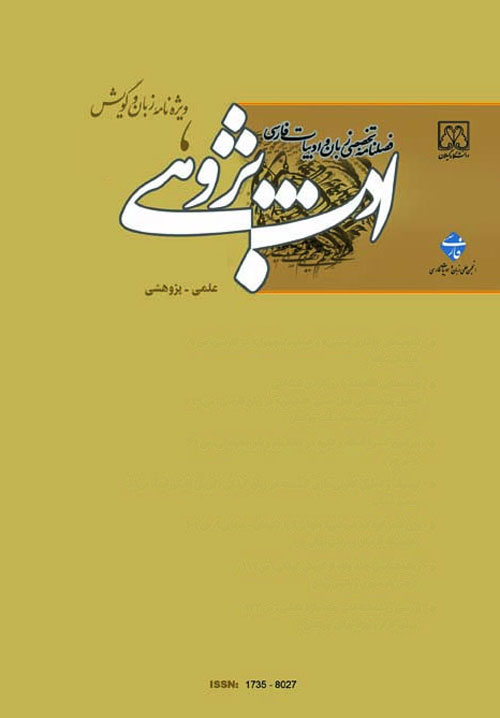The Syntactic Representation of Narrative in Attār's Mosibatnāme
Author(s):
Abstract:
Structuralism، since its emergence، has adopted different perspectives for analyzing literary texts. One among them is narrative study which seems to be very interesting for scholars. Tzvetan Todorof، the Bulgarian critic، has developed a comprehensive framework for narrative analysis of literary texts which comprises semantic، syntactic and lexical aspects. This article focuses on the syntactic aspect of narrative in Attār’s Mosibatnāme. The results show that the macro-narrative of Mosibatnāme is made up of one major sequence and forty two minor sequences. The two series of sequences are connected to each other through chaining، and all of them are embedded in the third episode of the major sequence. Chaining of the sequences orders the forty stages in a narrative line so that they will be embedded as a journey in the great evolution that the disciples go through.
Keywords:
Language:
Persian
Published:
Adab Pazhuhi, No. 31, 2015
Pages:
137 to 157
https://www.magiran.com/p1420002
سامانه نویسندگان
مقالات دیگری از این نویسنده (گان)
-
The Symbol of Mountain in Bidel’s Tūr-e-Marefat
Maryam Zarif, Mahdi Nikmanesh*
Half-Yearly Persian Language and Literature, -
The Correction of Two Mistakes in the Biography of Mohammad Hossein Hosseini-e Shirazi, Poet and Mystic in Qajar Era
Masume Sadeqi *, Mahin Panahi, Mahdi Nikmanesh
Journal of History of Literature,



